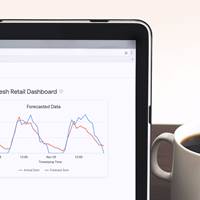A ML model running on Google Cloud can take any number of data points to make a decision. At the very minimum, these tend to include previous sales and inventory related data. However, this may branch out and also incorporate environmental factors e.g. milder weather affecting cotton production, higher transport and logistics costs, trend setting that has sparked interest in a particular line of clothing or, as we witnessed more recently, the uptake in casual clothing as a result of home-working and less socialising. The event feeds can be broad and wide, but also need to take into account the subsequent implications of dynamic pricing.
In the case of my pair of jeans, how would the customer demand for size 34 fluctuate if the price were reduced by 5% versus 10%? How is the profit margin affected in each case? What impact would this have on inventory level? These are questions all modern retailers should look to answer, but deriving and scaling this kind of insight across such a diverse set of data points is challenging to say the least.
There is no one-size-fits-all model for retailers. Some fast-fashion, low margin retailers may find themselves price optimising on fewer data points, applying very minor price fluctuation, and placing more emphasis on customer demand and inventory management. Whereas a designer fashion retailer may rely on a completely different set of data points and factors, focusing on a niche clientele, and only needing to resort to price optimisation for a smaller number of line items.
In this blog, Part 1 of our Supply Chain Optimisation Series, we look specifically at how Kin + Carta leverages Google Cloud to help retailers optimise their pricing strategy to combat these very challenges.





